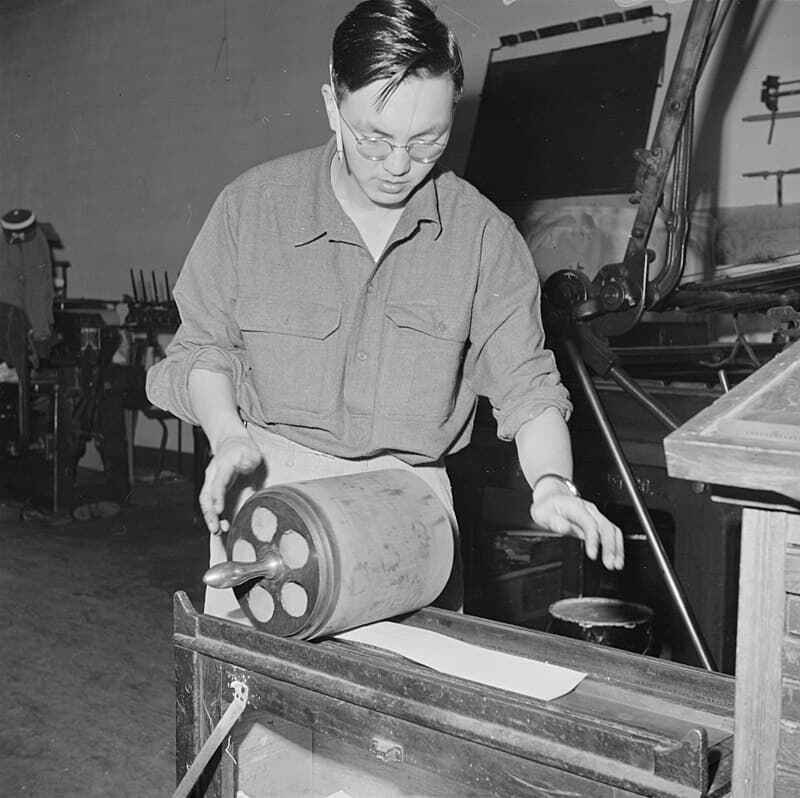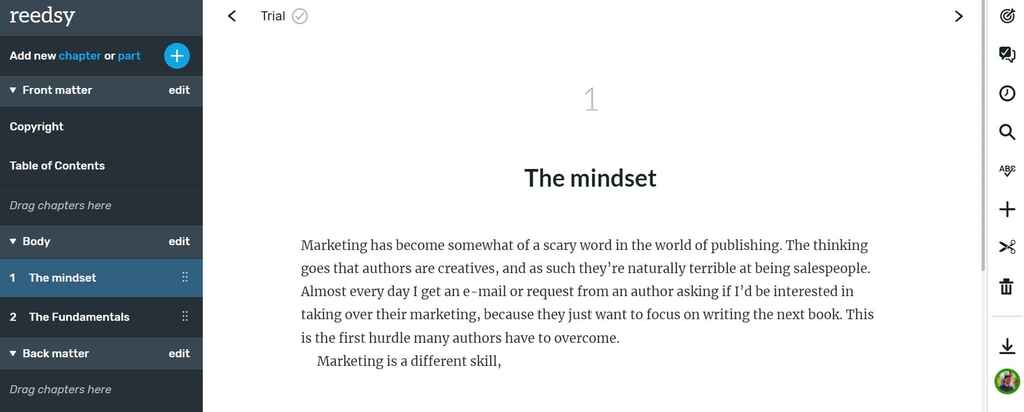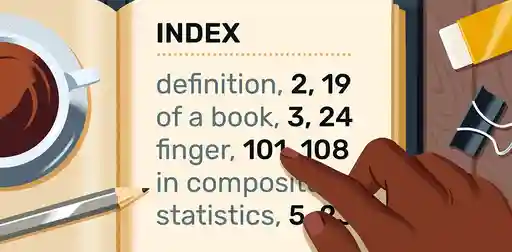Last updated on Dec 13, 2022
Typesetting Explained: The Craft of Interior Book Design
About the author
Reedsy's editorial team is a diverse group of industry experts devoted to helping authors write and publish beautiful books.
More about the Reedsy Editorial Team →Linnea Gradin
The editor-in-chief of the Reedsy Freelancer blog, Linnea is a writer and marketer with a degree from the University of Cambridge. Her focus is to provide aspiring editors and book designers with the resources to further their careers.
View profile →Typesetting is the process of arranging text on book pages to provide a great reading experience. A typesetter chooses the spacing between words and letters, the font type and size, and a page’s trim size, margin, and overall layout.
Typesetting dates back to the letterpress era when workers assembled movable types manually, and it's carried on today with digital tools. In this post, we'll cover what this craft entails and how you can professionally typeset your book.
It’s the art of arranging text on a book page
Several crafts around book publishing emerged when the printing press was invented, including typesetting, which is the process of preparing pages for printing. A typesetter would build each sentence with movable types on a composing stick before covering them with ink, placing the sheet of paper above, and rolling a brayer over them.
To make sure that their copy was accurate and defect-free, typesetters would first run print tests called galley proofs, a sample of the page they’d use to check for typos (as in typographical errors). The galley proofs were then distributed to editors and publishing companies, who returned them with further notes for edits and improvements.

To set the words correctly and apply the right amount of pressure when printing, this job required high precision and a skilled hand. So, experienced typesetters have been historically in demand in the publishing world. Although typesetting is now done digitally, it still requires a high level of skill and knowledge to manage all the aspects it entails.
💡 Even though they overlap in nature, don't mistake typesetting for typography. Typesetting deals with the technique of displaying text on a page to prepare it for print, the latter deals with the style of such text, to make it visually appealing.
It deals with page margins, fonts, and spacing
For each project, typesetters must take into account different variables, such as a book’s length, genre, and print format, which influence their decisions around:
- Trim size. The print size of a book (e.g. 5" x 8" or 6" x 9");
- Margins. How much white space should surround the text (the thicker the book, the bigger the margin);
- Typefaces and sizes. The font family, type, and size for the body text, headlines, captions, and so on (e.g., Garamond Normal, 12-pt).
Since everything on the page creates a complex and delicate dynamic that subliminally communicates to the reader, it’s important to make the right choices. Then, the typesetting process focuses on the text format and page layout. Specifically, these are some of the things typesetters take care of:
- Kerning: adjusting the spacing between characters;
- Word spacing: adjusting the spacing between words;
- Word stacks: preventing consecutive rows of text from starting or ending with the same word;
- Drop caps: stylizing the first character of the first paragraph in a chapter;
- Book blocks: ensuring that the block of text on each facing page ends on the same row;
-
Orphans and widows: preventing the last (or first) row of a paragraph to end isolated on the top (or bottom) of a page;
![Two paragraphs presenting a widow and an orphan]()
- Illustrations, graphs, and tables: how to feature illustrations and graphs throughout the text.
The harmonization of all of these details is what determines the book’s final interior design. While this process happens in the backend and it’s invisible to the reader, great typesetting truly makes a difference in how a book reads and looks.
Hire a pro typesetter on Reedsy
Daniel P.
Available to hire
I love books, and I want to help with yours! After 15+ years and 100s of projects, I know what it takes to make your book look its best!
Gene M.
Available to hire
Full-service design studio specializing in cover art and branding for indie authors and independent publishers.
Ryan M.
Available to hire
You've come to the right place :) I am a professional book cover designer in Northern California, helping authors realize their vision.
It significantly impacts readability
The essence of typesetting is to provide a smooth and enjoyable reading experience. It might be useful to compare it to a rail network: poor typesetting is like a set of rusty train tracks 一 it makes the writing clunk and clatter on the page, erratically dropping the reader in and out of the story. Great typesetting, on the other hand, makes for such a smooth ride that passengers forget that they’re on a train.
Let’s get specific with an example provided by Euan Monaghan, an art director and professional typesetter, that shows how typesetting improves readability. On the left page, you can see five readability issues marked in red, while on the right page, you’ll see them corrected with professional typesetting.

Specifically, the five issues highlighted concern:
- A 'ladder' of hyphenated words which throws the paragraph off balance;
- Poor word spacing 一 sometimes too tight, sometimes too loose, sometimes both, which creates ugly 'rivers' of white space;
- The use of hyphens instead of en- or em一 dashes;
- Erroneously using two spaces between sentences;
- A tight leading (inter-line spacing) doesn’t give the text enough room to breathe.
These are some of the most common issues authors face when setting their book for print. As you can see on the right page, fixing them makes the text look clearer, cleaner, and more professional, significantly impacting readability.
When you consider how much work goes into publishing a book, you definitely don't want to leave these small yet crucial details to chance. The good news is that, with the right tools, you can get professional results.
Modern typesetting requires specialized software
Many authors think they can easily typeset their books in Microsoft Word or Google Documents with the click of a finger, but that’s not true. While powerful writing software, they weren't designed with typesetting in mind. There are, however, professional tools to typeset your book in a smart or aesthetically pleasing manner. Let’s look at three of the best options.
1. Reedsy Studio

Our very own free software, Reedsy Studio, offers a minimal and intuitive interface to prepare your book for publication. We build it with authors in mind, making sure they meet industry standards for trade publications.
With Reedsy Studio, you’ll be able to import your manuscript, automatically justify titles and paragraphs, add images, endnotes, page breaks, and more. Since everything is taken care of 一 besides the writing, that is 一 you only need to export your print-ready files when you’re done.
2. Adobe InDesign

InDesign is a powerful design software that professional designers use 一 it offers maximum versatility and can be used to create almost any type of printed media. While InDesign is a powerful tool, there’s a steep learning curve to master its many features, and with a monthly subscription of $21, the cost of becoming proficient with InDesign can start to add up. That said, if you’re publishing an illustration-heavy book, and you’re willing to spend some time with it, it’s a great typesetting solution.
3. Microsoft Publisher

Unlike Word, Microsoft Publisher is a desktop app created for designing book interiors. By choosing a booklet layout type, you’ll be able to edit every aspect of your pages 一 from text style to pictures and to borders. While not as powerful as InDesign, it’s a great tool that can certainly help you create well-designed books. Plus, it’s less expensive 一 it cost $8.25 a month with Microsoft 365 Apps for business, and there’s a 1-month free trial option.
Depending on the type of book you’re writing, you may also want to consider the option of turning to a professional typesetter for support.
Though many projects still require a professional typesetter
Professional typesetters are experienced designers who will ensure your book has that gentle, pleasing word flow that makes for a great reading experience. You can find many of the most respected professionals on Reedsy’s marketplace 一 they’ll give your book the professional treatment it deserves, making sure every last detail is up to the highest standards.

MEET THE BEST PUBLISHING PROFESSIONALS
Polish your book with expert help
Sign up to browse 2000+ experienced editors, designers, and marketers.
To help you find the right one, we asked some of them to give us some tips on seeking out a suitable typesetter.
- Get a typesetter who’s familiar with the genre or market of your book.
Euan Monaghan: Each category often brings its own conventions and styles. The writer may wish to follow these conventions, or utterly subvert them — but your designer needs to understand the 'normal' baseline for the intended readership.
- Look at typesetting examples of their work.
Rachel Reiss: Always feel free to ask them to email you some PDFs, so you can examine their work up close. If they’ve designed different types of books, do the designs vary from book to book, and do the different designs feel as though they "fit" the content of the books? Is it easy and comfortable to read the text?
- Judge the typesetter's work as a reader.
Annabel Brandon: When you've encountered someone that may be suitable, try not to look at the design, instead, read their work. If it reads well, and you don't stumble or specifically notice anything, it's perfect. If a designer chooses to add ornamentation, there should be an apparent reason as to why. Otherwise, it's a distraction and doesn't honor the text itself.
- Educate yourself and ask questions.
Kevin Kane: Designers, especially book designers, are some of the nerdiest people you’ll ever meet. Having an interest in their trade can make a big difference in the author-designer relationship. Ask questions about the designer’s process, and about the decisions they make while designing a book. Whichever route you choose in the end, just remember to keep the end goal in sight: a polished, clean, and welcoming book interior that invites readers into the story.
For super fun insights from our designers and examples of typesetting in poetry, head to our post on poetry book layouts next.
Typesetting will continue to be one of the secret ingredients that allow books to be wonderful gateways to different dimensions. Hopefully, this article taught you a little more about it, and set you up for successfully typesetting your book 一 whether by yourself or with the help of a professional.









3 responses
Andrius andrius says:
08/05/2019 – 12:28
I've heard about vtex typesetting company. Do you have any recommendations?
Ann says:
04/06/2019 – 13:18
Love reading information about Typesetting. I was trained as a Typesetter about 30 years ago on the first coded computers before Mac's, when asked what my profession is people still do not know what a Typesetter is, so I have to tell them that I am a Graphic Designer, then they know, although technically I am not trained as one. On my Mac for work I am still using QuarkXpress 7.0 to typeset and design all the magazine, guides and diary publications that we produce and print for the publishing company that I work for. It may be outdated, but it still does the job.
LordMax says:
02/08/2019 – 11:34
You talk about indesign but for 99,99% of the time it's possible to use Scribus that's a wonderfull open source and free resource. I work with many professionals that use them for every kind of books daily